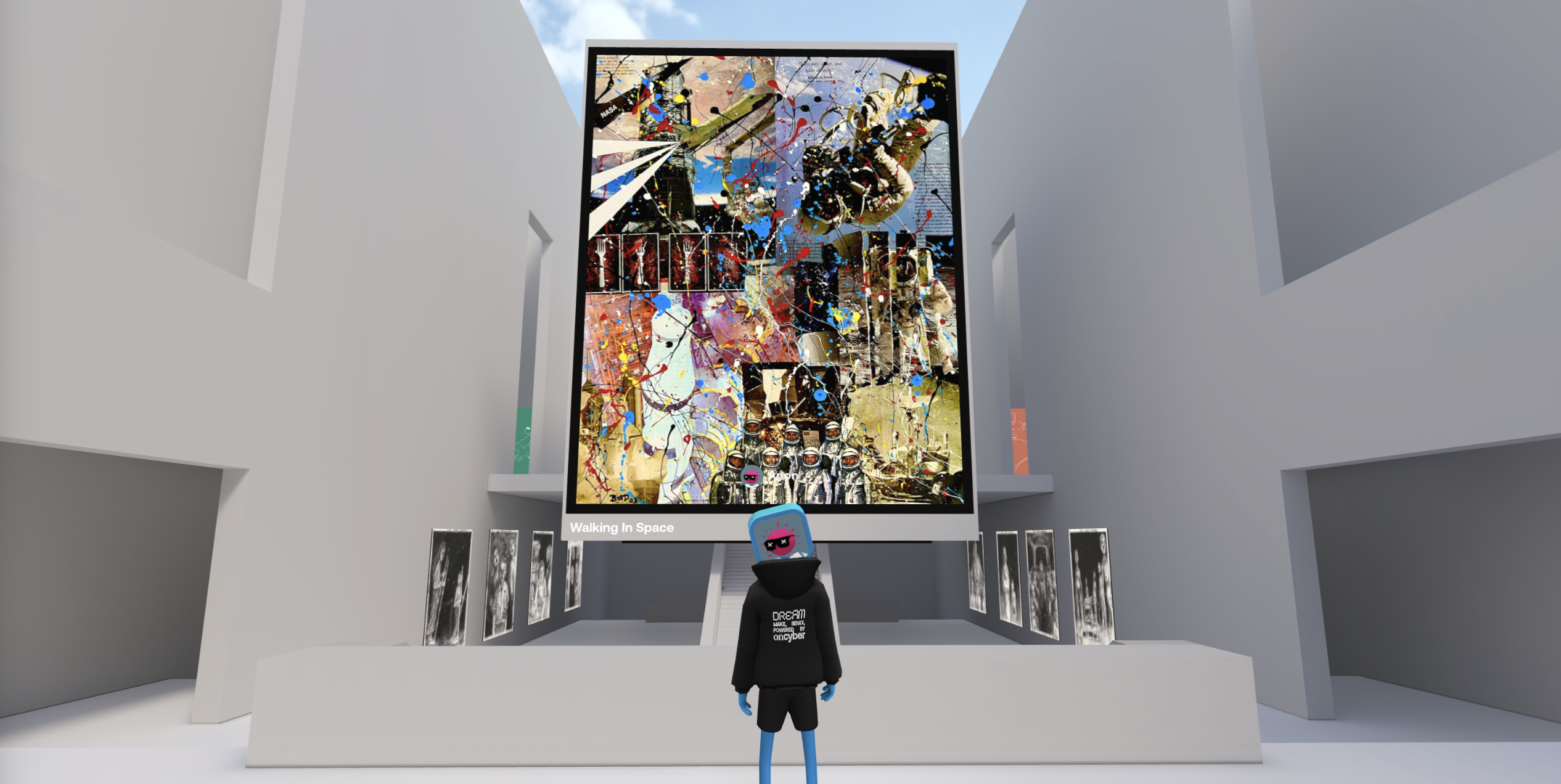The Future of Art Exhibitions: Virtual and Hybrid
In recent years, virtual art exhibitions have been on the rise, offering new opportunities for artists and audiences alike. With the COVID-19 pandemic accelerating the shift to virtual events, many galleries and museums have turned to virtual art exhibitions as a way to showcase their collections and engage with audiences online. As we look ahead to the future of art exhibitions, it's clear that virtual and hybrid events will play a major role in the art world. In this article, we'll explore the rise of virtual art exhibitions and their hybrid future.

oncyber: the missing pieces by @mysteriosvision
What are Virtual Art Exhibitions?
Virtual art exhibitions are digital spaces that allow audiences to experience art in a virtual environment. Unlike traditional art exhibitions, virtual exhibitions can be accessed from anywhere in the world and at any time, making them more accessible to a wider audience. Virtual art exhibitions can take many forms, from 360-degree virtual tours to immersive experiences using virtual reality (VR) or augmented reality (AR) technology.
Kaloh’s Newsletter is a reader-supported publication. To receive new posts and support my work, consider becoming a free or paid subscriber.
The Rise of Virtual Art Exhibitions
The COVID-19 pandemic has had a significant impact on the art world, with galleries and museums closing their doors to the public for months on end. In response, many galleries and museums turned to virtual art exhibitions as a way to showcase their collections and engage with audiences online.
Virtual art exhibitions have many benefits, including increased accessibility and reach, lower costs, and the ability to showcase art in new and innovative ways. Gallery.so, oncyber, and deca.art are notable examples of successful art exhibitions that have effectively utilized technology to showcase and promote contemporary art from around the world.

deca.art: Solar Transits by Robert Hodgin
The Hybrid Future of Art Exhibitions
While virtual art exhibitions offer many benefits, there is still a strong desire among art professionals and audiences for in-person experiences. As a result, many galleries and museums are exploring the potential for hybrid art exhibitions that combine virtual and in-person experiences.
Hybrid art exhibitions can provide new opportunities for artists and audiences alike. For example, virtual components of hybrid exhibitions can increase accessibility and reach, while in-person components can provide a more immersive and sensory experience. Hybrid exhibitions can also provide new revenue streams for galleries and museums, as they can sell virtual tickets and offer virtual tours to audiences around the world.
The Benefits of Virtual and Hybrid Art Exhibitions
Virtual and hybrid art exhibitions offer many benefits for artists and audiences alike. For artists, virtual and hybrid exhibitions can increase exposure and reach, as well as provide new opportunities for revenue. For audiences, virtual and hybrid exhibitions can increase accessibility, engagement, and understanding of art. Additionally, virtual and hybrid exhibitions can reach new audiences who may not have had the opportunity to attend traditional art exhibitions.

gallery.so: continuum by Kota Nakazono
Challenges and Considerations for Virtual and Hybrid Art Exhibitions
While virtual and hybrid art exhibitions offer many benefits, there are also challenges and considerations that must be taken into account. One of the biggest challenges is the need for new technical skills and expertise, such as 3D modeling and VR/AR development. Additionally, technical issues such as slow internet connections or glitches in the VR/AR experience can impact the overall success of virtual and hybrid exhibitions. Finally, there are important considerations around intellectual property rights and the need to protect artists' work in a digital space.
The Role of Technology in Virtual and Hybrid Art Exhibitions
Technology, plays a critical role in virtual and hybrid art exhibitions, offering new opportunities for artists and audiences to engage with art in innovative ways. VR and AR technology can create immersive experiences that allow audiences to interact with art in a way that was previously impossible, while blockchain and NFTs provide artists with new avenues for exhibiting, selling, and protecting their work online.
NFTs, use blockchain technology to verify the authenticity and ownership of digital artwork, allowing artists to sell their work as a unique, one-of-a-kind asset. This has revolutionized the art market, as it allows artists to monetize their digital creations in a way that was previously difficult or impossible.

oncyber: Memorial for Viscerina by Claire Silver
Virtual and hybrid art exhibitions are rapidly becoming a mainstay in the art world. While virtual exhibitions offer increased accessibility and cost savings, hybrid exhibitions offer the best of both worlds by providing in-person sensory experiences alongside the benefits of virtual exhibitions. The benefits of these exhibitions are numerous, including increased exposure and revenue opportunities for artists and increased accessibility and engagement for audiences. However, there are challenges to be addressed, such as technical issues and the need to protect intellectual property rights. Ultimately, the role of technology in these exhibitions is critical, offering new and exciting ways to engage with and experience art.
If you haven’t subscribed, join +8,000 AI art fans by subscribing here:
Until next time,
- Kaloh